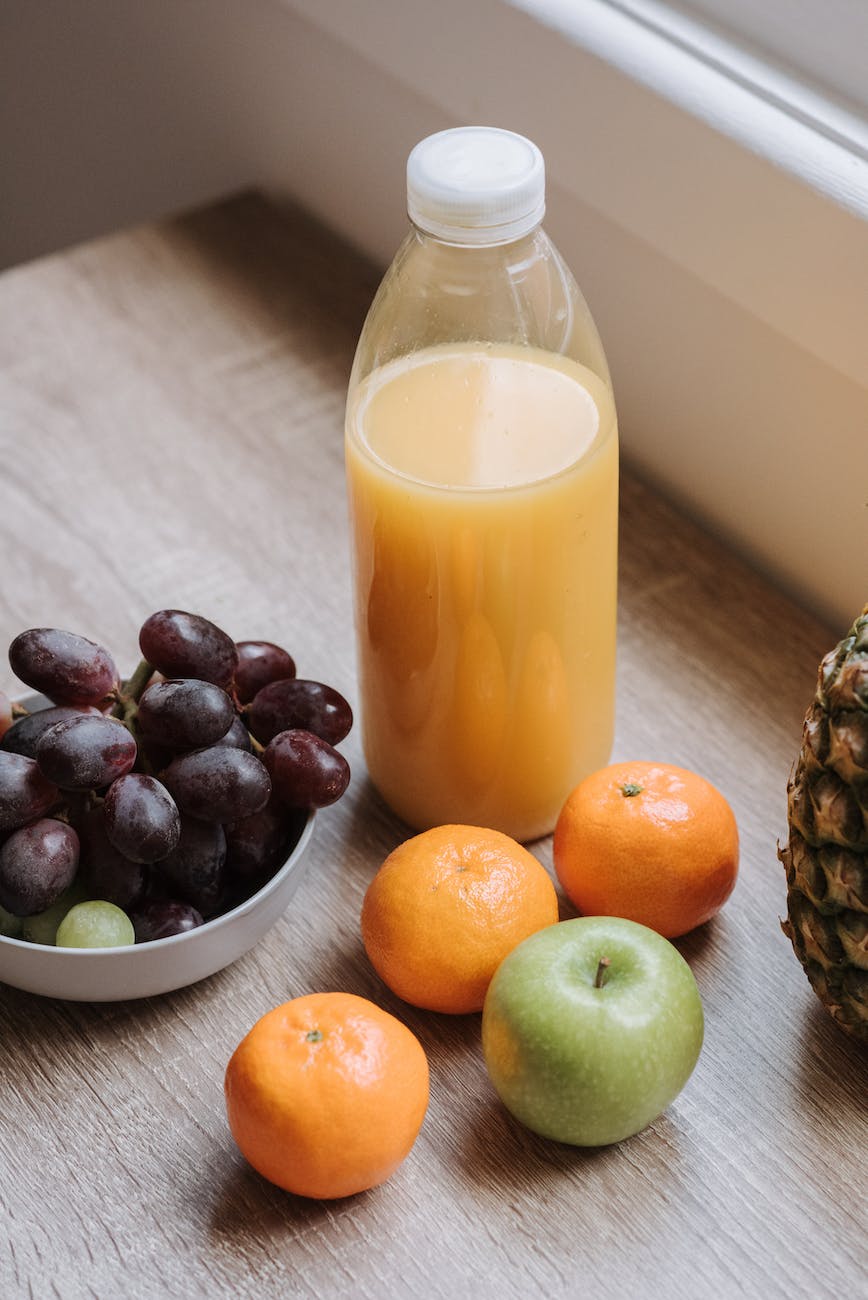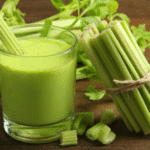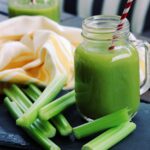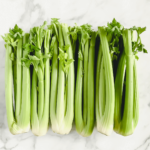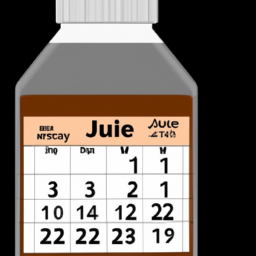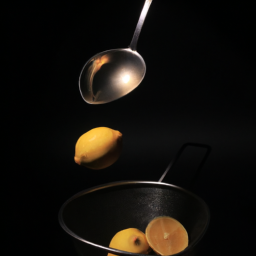Celery juice is the latest health craze, praised worldwide for its many benefits. From improving digestion to achieving clearer skin, celery juice provides a variety of ways to enhance your overall health. But when is the best time to drink it for maximum impact? Thankfully, you’ve found the right source – I’m here to provide all the information you need!
For those who want to make sure they get the most out of their daily dose of celery juice, timing is everything. Drinking it at specific times during the day will ensure that your body absorbs and uses every drop of goodness contained within this superfood beverage. Plus, understanding how and when to drink celery juice can help create a daily routine that supports optimal health.
So if you’re looking for an easy way to boost your nutrition game, read on as I share my top tips on when exactly you should be drinking celery juice for maximum health benefits!
Are you feeling a bit sluggish and in need of an energy-boosting solution? Look no further than celery juice! It’s the trendy health drink that everyone is talking about. Celery juice has been around for centuries, but now it’s reaching new heights of popularity due to its purported health benefits.
But what exactly is celery juice? To make celery juice, all you have to do is wash some stalks of organic celery (leaves included!), chop them up into small pieces and blend until smooth with a juicer or blender. Strain any remaining chunks out if desired. You can also add other ingredients such as lemon or ginger to enhance flavor. If fresh celery isn’t available, frozen celery works too!
Celery contains several essential nutrients including vitamin A, C, K, folate and potassium while being low in calories. It’s also packed with antioxidants which may help protect cells from damage caused by environmental factors like pollution and UV rays. There are lots of alternatives to drinking pure celery juice – try adding cucumber or apple for extra flavor – so there’s something for everyone! And now let’s move on to discuss the nutritional benefits of this amazing beverage…
Nutritional Benefits Of Celery Juice
When it comes to the nutritional benefits of celery juice, there’s no denying that this simple vegetable has a lot to offer. Packed with vitamins and minerals, antioxidants, and other essential nutrients, celery juice can provide your body with an array of health-promoting benefits.
Celery is rich in vitamin K, which helps support healthy blood clotting and bone metabolism. It also contains beneficial amounts of vitamin A and C as well as magnesium, potassium and manganese – all of which are important for overall health and wellbeing. Additionally, celery contains powerful antioxidants like lutein and zeaxanthin which have been shown to protect against certain chronic diseases such as heart disease or cancer.
In terms of its nutritional profile, celery juice is especially high in water content making it naturally hydrating. In addition to the vitamins and minerals mentioned above, it also provides fiber which can help regulate digestion as well as promote satiety after meals. With so many key nutrients packed into one glass of juice, it’s easy to see how drinking celery regularly can be beneficial for overall health.
So when is the best time to drink celery juice for maximum benefit? The answer may depend on individual goals or preferences but generally speaking any time throughout the day could be suitable for reaping its nutritional rewards. Plus since it doesn’t require too much preparation you can even enjoy some before heading out the door!
How To Prepare Celery Juice
Making celery juice is easy, but there are a few tips to keep in mind for maximum health benefits. First and foremost, it’s important to select fresh organic celery stalks when juicing! Make sure the vegetables look vibrant and free of any bruises or discoloration. Wash them thoroughly before juicing to remove dirt, pesticides and other contaminants.
When juicing celery, all you need is a good quality juicer and some basic kitchen tools. Some recipes call for adding ingredients like apples or ginger to boost flavor, so have those on hand as well. Start by cutting the stalks into small pieces that will fit through your juicer’s feed chute. Then run the pieces through the machine until you get at least one cup of juice per stalk used.
Once you’ve made your celery juice, it should be consumed immediately – within 15 minutes if possible. The longer it sits out in open air, the more nutrients can degrade over time due to oxidation and light exposure. Enjoying freshly-made celery juice right away ensures you’ll receive its full nutritional content! With these simple steps in mind, now let’s explore when is the best time to drink celery juice for maximum health benefits...
When Is The Best Time To Drink Celery Juice?
It’s no secret that celery juice can be beneficial for your health. Studies have shown that drinking 16 ounces of pure, fresh-pressed celery juice every morning on an empty stomach helps to detoxify the body, reduce inflammation and improve digestion. But when is the best time to drink it?
It turns out that the timing matters just as much as what you put in your glass. The most optimal time to drink celery juice is first thing in the morning before eating or drinking anything else. This ensures that all of its nutrients are absorbed quickly and efficiently into your bloodstream. Additionally, research has found that consuming celery juice between meals can help regulate blood sugar levels while providing a steady source of energy throughout the day without crashing later on.
However, if mornings aren’t your favorite time of day, there are still plenty of other ways to incorporate this superfood into your diet! You can add some freshly pressed celery juice to a smoothie or salad dressing for an extra boost of vitamins and minerals. Drinking it at night right before bedtime also has its benefits – it helps flush toxins from your body while aiding digestion during sleep. No matter when you choose to consume it, celery juice provides numerous health benefits including improved skin health, boosted immunity and reduced bloating. So grab a glass and start sipping today!
Potential Side Effects Of Drinking Celery Juice
It is important to be aware of any potential side effects associated with drinking celery juice. While for some people, the health benefits may outweigh any risks, it’s still essential to know what could happen if you drink too much celery juice or your body doesn’t react well to it.
One of the most common adverse effects from drinking celery juice can be digestive issues such as stomach pain and nausea. This is usually due to the high levels of oxalic acid found in celery which can irritate sensitive stomachs. It can also cause gas and bloating so start by consuming small amounts of celery juice at first until your body gets used to it. If these symptoms persist, then reducing or discontinuing use altogether would be recommended.
In rare cases, allergic reactions have been reported when consuming celery juice. Symptoms vary depending on the individual but may include swelling, hives, difficulty breathing and throat closing up. If any of these occur after ingesting celery juice, seek medical attention immediately and avoid further consumption until cleared by a doctor.
While there are certain health risks associated with drinking celery juice, they aren’t enough to deter many people who believe in its purported health benefits. With that said, exercising caution is always advised whenever something new is introduced into one’s diet or lifestyle habits. Storing and consuming prepared celery juice correctly will help mitigate any potential negative impacts while reaping all its nutritional value possible.
Storing And Consuming Prepared Celery Juice
Storing and consuming prepared celery juice is important if you want to reap the maximum health benefits from drinking it. To ensure that your celery juice stays fresh, store it in an airtight container or jar in a refrigerator. Consuming immediately after preparation is best as this ensures that all of its nutrients are intact and available for body absorption. If stored correctly, prepared celery juice can last up to three days without losing any of its nutritional value.
If you have leftover pre-made celery juice, make sure to cover the container with plastic wrap to prevent oxidation and the growth of harmful bacteria. It’s also important to shake the liquid well before drinking it again as some settling may occur during storage which could lead to clumping when consumed again. When consuming prepared celery juice, drink slowly so that your digestive system has time to properly process all the vitamins and minerals contained within it.
By taking these steps, you’ll be able to maximize both the taste and nutrition of your homemade celery juice for optimal health benefits! The next step is learning how combining other ingredients with celery juice can increase its efficacy even more.
Combining Other Ingredients With Celery Juice
Combining celery juice with other ingredients can be a great way to enhance its nutritional benefits. Adding fruits or vegetables that are rich in antioxidants, vitamins and minerals is an excellent way to boost the health benefits of drinking celery juice. Additionally, adding ingredients like ginger, turmeric and lemon can help reduce inflammation while enhancing immunity due to their anti-inflammatory properties.
For those looking for an added energy boost, consider blending celery juice with matcha green tea powder which contains caffeine as well as chlorophyll and catechins – compounds known to have antioxidant effects on your body. For those who prefer something more sweet, try adding pineapple or apple juice into your celery juice blend; both juices contain natural sugars that provide plenty of electrolytes without any artificial sweeteners or flavors.
Mixing different plant-based foods together can provide you with all sorts of amazing health benefits! With so many options available, it’s easy to find combinations that suit your tastes and dietary needs. Nowadays there’s no need for anyone to feel stuck in a single flavor profile when consuming this nutritious drink; instead, experiment with various ingredient combos until you find what works best for you! Moving forward we’ll explore some natural alternatives to drinking celery juice that still offer great health benefits.
Natural Alternatives To Drinking Celery Juice
For those who don’t wish to drink celery juice, there are many natural alternatives. Celery seed tea is a great way to get the benefits of celery without drinking it in juice form. This tea can be made by boiling crushed or ground celery seeds and straining the liquid before drinking. You can also buy prepared teas at most health food stores. Additionally, extracts from celery stalks can be added to salads, smoothies, and other dishes for an extra dose of nutrients. Sprinkling some ground celery spice over meals also adds flavor while increasing nutrient content. Smoothies with fresh or frozen celery pieces make a delicious snack that’s packed with nutritional value. Finally, adding fresh diced celery to salads makes them both more flavorful and nutritious.
Dosage Recommendations For Maximum Health Benefits
Take the case of John, a healthy 24-year-old man who is looking to maximize his health benefits by drinking celery juice. He heard that several glasses of freshly juiced celery on an empty stomach can help him with fatigue and reduce inflammation in his body. But he’s wondering what the optimal quantity would be for him to drink daily?
The answer will depend on your current state of health and dietary needs. Generally speaking, it’s recommended to start off slowly with about 6 ounces or less per day before increasing the amount over time as tolerated. Consuming too much at once may result in adverse effects like nausea or headaches so it’s best to build up tolerance gradually. Additionally, if you experience any discomfort while consuming celery juice, consider reducing dosage until symptoms subside.
In terms of maximum health benefits, experts suggest drinking eight ounces (1 cup) of fresh celery juice each morning on an empty stomach; this allows your body more time to absorb its nutrients since they are better absorbed without food present. Furthermore, ensure that you buy organic produce when possible because conventionally grown produce may contain higher levels of pesticides which could potentially offset some of the positive effects from celery juice consumption.
To summarize: For optimum wellbeing, aim for 8 ounces (or 1 cup) of fresh celery juice every morning prior to eating breakfast – make sure it’s organic whenever possible – and start slow if needed until you find a comfortable dosage level for yourself. This way you reap maximum health benefits from ingesting this nutritious beverage!
Summary And Concluding Remarks
When it comes to maximizing the health benefits of celery juice, timing is key. Ideally, one should drink 16 ounces of freshly prepared celery juice on an empty stomach first thing in the morning for best results. It’s important to note that this dosage may be too much for some people and they can adjust accordingly as needed. If drinking celery juice every day isn’t possible or desired, other options such as juicing fresh celery with other vegetables like cucumber and kale are great alternatives. Additionally, incorporating more raw celery into your diet by eating it in salads or adding a few stalks to smoothies could provide similar health benefits as consuming pure celery juice.
In summary, when preparing and consuming celery juice, ensure you use organic produce if at all possible and take time out each day to enjoy the numerous health benefits that come along with this simple yet powerful beverage. Taking small steps towards bettering your overall wellbeing can go a long way in improving your quality of life for years to come!
Frequently Asked Questions
Is Celery Juice Good For Weight Loss?
They say you are what you eat, and if that’s the case then celery juice could be the answer to your weight loss woes. From diabetes patients to pregnant women, children and everyone in between – this super-charged drink is a hot topic when it comes to health benefits. Let’s take a look at why everybody is talking about celery juice for weight loss:
First off, celery is packed with antioxidants which help detoxify the body naturally. This helps reduce inflammation which can cause us to store excess fat around our bellies and hips. Celery also contains compounds such as apigenin, luteolin and polyacetylenes which boost metabolism so we’re burning more calories throughout the day. Here’s an idiom for ya – “Celery juice gives you wings!”
Next up, let’s talk nutrition facts. One cup of raw celery contains just 21 calories but packs plenty of vitamins A, B6, C and K along with essential minerals like magnesium, iron and potassium. It even has dietary fiber which helps keep us full longer meaning fewer cravings for unhealthy snacks or meals later on in the day. Plus, here’s some food for thought – three key elements to consider when looking into adding celery juice as part of your weight loss journey:
- Appetite suppression
- Increased metabolic rate
- Improved nutrient absorption
In other words, drinking celery juice regularly provides long term results when it comes to improving overall health while helping shed extra pounds without depriving yourself from necessary nutrients or exercising excessively. So whether you’re a fitness enthusiast looking for a natural way to slim down faster or someone who needs help managing their sugar levels – incorporating daily servings of this powerful veggie can make all the difference!
Can Celery Juice Be Consumed By People With Diabetes?
Are you a diabetic looking to add celery juice to your diet? Celery juice is gaining in popularity as a health drink, but can it be consumed by people with diabetes? Let’s take a look at the benefits and risks of consuming celery juice while managing diabetes.
Diabetics need to pay special attention to their diets. While there are no specific prohibitions against drinking celery juice if you have diabetes, it is important to understand the implications for any changes to your diet. Celery has some known benefits that could be useful for diabetics. For example, its high fiber content helps regulate glucose levels and slow down digestion process which may help control blood sugar levels. Additionally, celery contains minerals such as potassium and magnesium that support healthy cellular function. It also has antioxidants that reduce inflammation in the body.
On the other hand, it’s important consider potential risks when adding new foods into your diet – especially for those who are on medication or insulin injections to manage their condition. The variety of sugars found naturally in celery could cause an increase in blood sugar levels and therefore should be monitored closely when added into one’s usual meal plan regimen. As always, consulting with your physician before making major dietary changes is strongly recommended so they can assess how best to adjust medications if necessary.
In short, celery juice may provide certain beneficial qualities to a diabetic’s nutrition regime; however, due caution must be taken when introducing any new food item into one’s diet – even something as seemingly innocuous as celery! Before beginning consumption of this popular health beverage, speak with your doctor about whether including it in your regular routine would be appropriate for you specifically based on factors like current medications or lifestyle habits.
Is Celery Juice Safe For Pregnant Women?
When it comes to pregnant women, celery juice can be a little tricky. There are both health benefits and safety concerns associated with this drink that need to be considered. While its nutrient content is beneficial for most people, there are some special considerations for expecting mothers.
The good news is that the vegetable’s high vitamin A, B6 and C levels provide essential nutrition during pregnancy. Celery also contains folate which helps reduce birth defects in infants. However, pregnant women should always check with their doctor before drinking the juice due to potential risks such as increased risk of bleeding and certain toxins present in celery stalks.
In addition to consulting with a physician, pregnant women should also watch their intake of celery juice carefully; too much could cause problems like dehydration or even cramps due to an excessive amount of electrolytes entering the body at once. It’s best not to consume more than one glass per day while pregnant so your body has time to adjust safely and gradually reap the benefits without putting yourself at needless risk.
Given all these factors in mind, it’s clear that if you’re expectant, you need to approach consuming celery juice cautiously and judiciously – making sure you get approval from your medical team first! With proper understanding of what needs to be taken into account when choosing whether or not to have a daily dose of celery juice while pregnant, moms-to-be can make informed decisions about what will work best for them and their baby.
Can Celery Juice Be Consumed By Children?
When it comes to children and celery juice, there is no one-size-fits-all answer. While celery juice can be beneficial for adults in terms of weight loss and maximizing nutrition, the same may not apply to kids. In fact, the impact of consuming celery juice on a child’s health depends largely on their age, overall health and activity level.
It’s important to note that while some parents believe giving their children celery juice will provide them with added nutrients or aid in weight loss, this isn’t necessarily true. For young children especially, it might be better for them to get their nutrition from more traditional sources such as fruits, vegetables, proteins and grains – all of which are packed with essential vitamins and minerals needed for growth and development.
That said, if your older child wants to try drinking celery juice for its potential health benefits then you should consult with their doctor first before introducing it into their diet. The doctor can help assess whether they’re old enough to safely consume it without any adverse effects on their health. Additionally, ensure that your youngster doesn’t replace meals or snacks with the juice as this could lead to malnutrition over time.
Whatever decision you make regarding your child’s consumption of celery juice should be based on professional advice and further research in order to protect the long-term wellbeing of your little one.
Is It Safe To Consume Large Amounts Of Celery Juice?
Do you ever wonder if it’s safe to consume large amounts of celery juice? Many nutritionists have begun touting the incredible benefits of drinking this veggie-derived liquid, but we must be mindful of how much is too much. Although its potential health advantages are numerous and hard to ignore, consuming excessive servings could lead to adverse effects.
Celery juice has long been known for its nutrient density, however in recent years it has gained increased attention due to its purported anti-inflammatory properties. Studies suggest that by drinking a glass or two per day, one can benefit from improved digestion as well as improved cardiovascular function. Of course, more research needs to be conducted before any definitive conclusions can be drawn.
It’s important to remember that while there may be maximum amounts of celery juice which yield optimal health benefits, everyone should consult their doctor prior to increasing their intake significantly. As with most things in life, moderation is key — so take time to discuss your own individual dietary needs with a trusted medical professional before making any drastic changes!
Conclusion
It’s clear that celery juice is a nutrient-dense beverage that can offer numerous health benefits. But when it comes to reaping the maximum benefit, timing is key. To get the most out of this superfood drink, it’s best to consume it first thing in the morning on an empty stomach and wait at least 20 minutes before eating or drinking anything else.
Drinking celery juice may be beneficial for weight loss, diabetes management and promoting overall good health. However, pregnant women should check with their doctor about consuming large amounts of celery juice as some components can affect fetal development. Similarly, children shouldn’t consume too much due to its high sodium content and potential interaction with medications they may be taking.
In conclusion, adding a glass of celery juice into your daily routine has many potential benefits – but knowing when to drink it is essential if you want to experience these perks! By following these simple guidelines, you could reap all the advantages this healthy elixir has to offer without any negative side effects.
Hi, I’m Alexander. I’m a vegan of over 20 years, and I initially made the switch for health reasons. However, as time went on, I became more and more passionate about the ethical and environmental implications of leading a vegan lifestyle.
I am the author of The Graceful Kitchen, a vegan blog where I share recipes for delicious and nutritious vegan meals. As someone who is deeply committed to living a cruelty-free life, I am also a strong advocate for using whole foods as the foundation of a healthy diet – and believe that going vegan is one of the best ways to achieve this.

